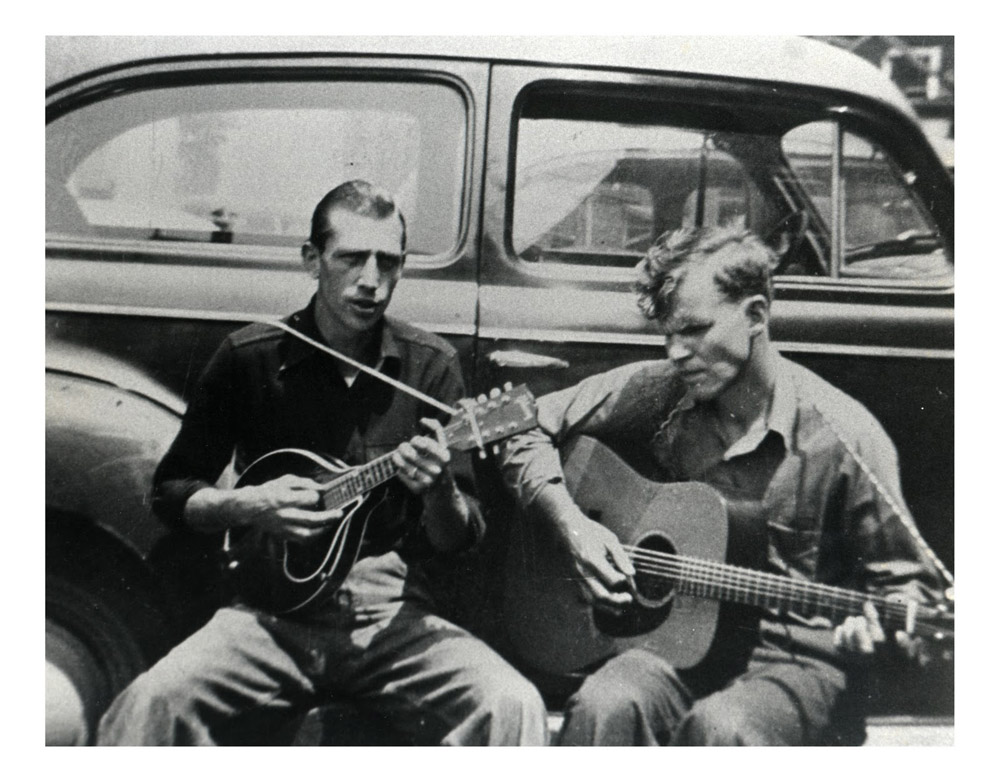Banjo on My Knee: A Primer on Listening to Bluegrass and Old-Time String Music

For the sake of this article, let’s just assume for a moment that you’re convinced of the merits of listening to bluegrass and old-time string music…
That means you don’t need to hear the countless examples of impressive technical virtuosity among the genre’s pickers of guitar, mandolin, banjo, and fiddle; you don’t need an argument for the tonal warmth that rises from its all-acoustic instrumentation like the steam off a platter of fresh biscuits and sausage gravy. You don’t need a lengthy exposition on the underdog grace of its humble Appalachian roots and its transparent threads of connection to American history, as deep as a seam of coal in a mountainside. You totally get the genre’s visceral sincerity so important to millennials, who in their relentless search for authenticity often find themselves grasping back to their Greatest Generation great-grandparents’ traditions for anchors.
So, where do you start? Well, you could search “bluegrass” in your favorite music streaming service, and chances are good you’ll hear banjo music. But you’ll also miss out on a good portion of the founders of the bluegrass genre, and you’ll completely miss the old-time style of string bands still largely unknown to all except its dedicated niche.
To remedy that, we’ve put together a Spotify playlist as a listening primer that will give you a solid foundation on the bluegrass genre’s first generation of musicians, with some old-time and flatpicking folk guitar thrown in for good measure. Use it to explore each of these artists’ full bodies of work and launch off into related artists in later generations of bluegrass. (Hint: it makes for great background music for your workshop, or when you’re making skillet cornbread.)
Here are a couple of things to consider when you’re listening to our playlist. As a primer it’s by no means an exhaustive list, but understanding a little bit of background will enrich your experience.
Instrumentation & vocals
The traditional instruments of old-time and bluegrass are vocals, fiddle, banjo, guitar, and mandolin. (Bass or drums didn’t make their way into the genre until bluegrass started to merge with country music in the 1960’s.) Harmonies tend to be compact, with a high tenor thrown in for emphasis.
One important distinction to note on the banjo are the two main styles of picking: 1) clawhammer in old-style and 2) three-finger picking in bluegrass. When you listen to clawhammer, pay attention for the “bum-ditty” rhythm and the high 5th string getting hit repeatedly—it gives you clues on how the technique works. Watch this video of the prolific Clifton Hicks to see it in action:
The three-finger picking style is what makes bluegrass so distinctive, which under the direction of Earl Scruggs really took off in its blazing-fast glory. Here’s Earl killing it on Foggy Mountain Breakdown, one of his most famous compositions (with a clown car-style line of other banjo players):
Song structure
In the first few old-style songs of the playlist, you’ll hear a really simple song structure; typically two musical phrases, four measures each, on an A A B B pattern, repeated several times. (Prime example is “June Apple” by Wade Ward.) The melody constantly drives to the end of the song, where it concludes with a simple brush of the strings on the root chord.
As the bluegrass genre developed, it took on more complexity in arrangements that most Western popular music contains—a true verse-chorus structure; intros and outros; solo breaks for banjo, mandolin, fiddle, and guitar; and added instruments, such as the resonator guitar in this video of Trey Hensley shredding it:
Thematic matter
This is a genre that came out of the hardship, hard work, and hard living. You’ll hear a lot of songs about sorrow, mountains, moonshine, and gospel. “Man of Constant Sorrow” is a classic example of this:
A note on geography
With very few exceptions, the musicians in this playlist come exclusively from Appalachia, particularly clustered in the mountains of Kentucky, Virginia, West Virginia and North Carolina. (The most famous conventions for bluegrass and old-time music are still centered in this region.) It’s become a worldwide phenomenon—one of the best banjo makers are based in California, I’m personally connected to some great bluegrass musicians in the UK—but when you’re looking at the roots of the genres, it’s important to note the culture it grew out of.
(Thanks to the always-impressive Dusty Lee Elmer for vetting this playlist and making some recommendations! Check his fantastic banjo, guitar, and ukulele work on Instagram and on ReverbNation)









